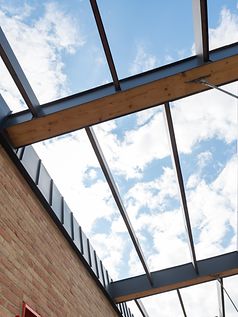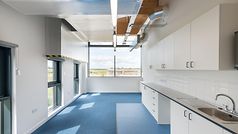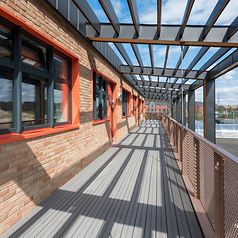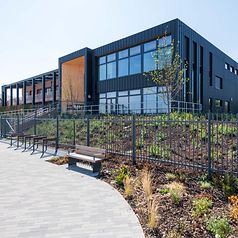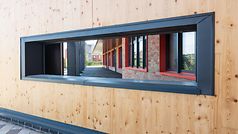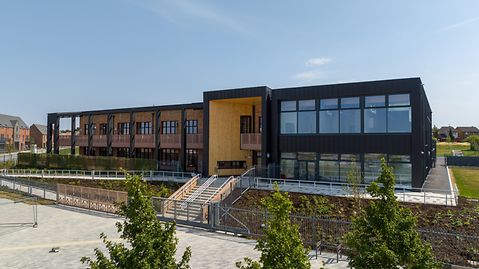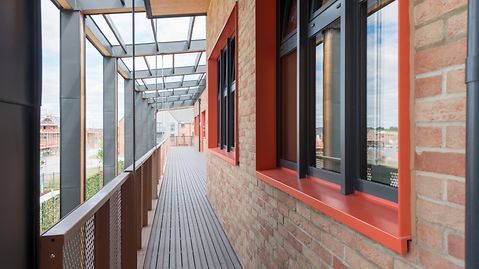Scotland paves the way to net zero with Passivhaus projects
Discover how Scotland is tackling carbon emissions with a move towards the Passivhaus standard of energy efficiency in buildings

With Government net zero targets creeping ever closer, construction industry stakeholders need to find ways of ensuring buildings meet strict energy efficiency requirements. Reducing energy consumption is one method of achieving net zero in buildings and often easier than trying to generate energy to offset carbon emissions. However, a new building’s energy efficiency as modelled is often not borne out in practice, resulting in underperformance compared to the anticipated energy efficiency – a problem known in the industry as “the performance gap”.
Scotland is combatting this issue in its educational facilities by linking funding to energy efficiency, with the Scottish Futures Trust’s Learning Investment Program requiring an energy target of 67 kWh/m2 per year to be met. This corresponds to the Passivhaus standard of energy efficiency and has therefore led to an increase in the number of Passivhaus schools being constructed there, as the rigorous testing involved gives specifiers assurance that the resultant construction will perform as designed.
Passivhaus standard
As in Scotland, many governments are moving towards introducing Passivhaus level standards to lower energy consumption in buildings. The Passivhaus concept is a standard developed by the Passivhaus Institut in Germany. With this standard, energy savings of up to 90% compared to standard building stock and over 75% compared to typical newbuilds are possible. As the standard is performance-based, the energy efficiency modelled for the building is the same, or very close to, what is actually achieved in practice, making planning reliable and projections accurate for years to come.
Success with Schüco
Schüco offers a wide range of competitive Passivhaus products across all building sectors, for both newbuilds and renovations. While there are now increasing numbers of passive house level products on the market, these have not all been subject to the stringent testing in order to be deemed Passivhaus certified. The Schüco Passivhaus products are all officially certified by the Passivhaus Institut, which means that they have been tested and approved for use in passive house projects according to uniform criteria, providing a guarantee that the high levels of energy efficiency promised will be achieved in the finished building.
Schüco currently offers the following Passivhaus certified systems:
Façade Systems
Window Systems
Schüco Jansen also has a steel façade system, VISS 50/60 HI, as well as the Janisol HI system which, when configured as a fixed light, is the only Passivhaus certified steel window available on the market. Explaining what sets Schüco apart from other Passivhaus system suppliers, Grant McCormick, Architectural Project Manager for Scotland, comments “The Schüco Passivhaus systems redefine excellence—outstanding thermal efficiency, sleek design, and lasting durability, coupled with excellent burglar resistance and acoustic performance for complete peace of mind. It's precision German engineering for a German concept.”

Comprehensive support
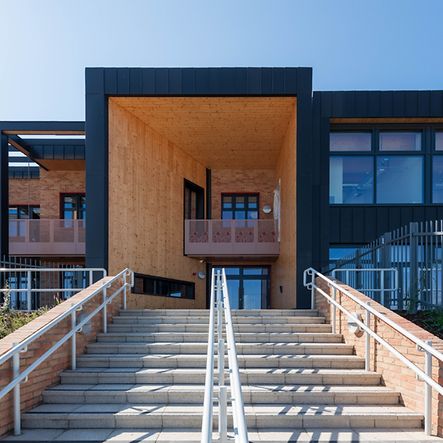
Constructing Passivhaus certified buildings is a complex process. When specifying products for a Passivhaus certified project, specifiers need to consider each element separately to ensure adherence to the standard. Only the Schüco frames are Passivhaus certified, which means suitable glass would need to be specified in addition. Schüco not only provides the right products, but also proactive support to ensure the building meets the stringent requirements necessary to achieve certification.
Schüco has already played a central role in the implementation of a number of key Passivhaus projects in the UK, including Thornhill Primary School, Bedfordshire’s first passive house school, and Quarry House, a private home built in the pit of a disused stone quarry. Praising the support received from Schüco, John Heaney, Senior Architectural Technologist at ECD Architects, the practice responsible for the design of Thornhill Primary School, commented, “I would definitely use Schüco for future Passivhaus designs. The technical support Schüco provided through the process was immense and crucial to ensuring the project was to Passivhaus standard.”
For more information or to find out how Schüco could help you with your Passivhaus project, contact Grant McCormick, Architectural Project Manager for Scotland, or Simon Black, Business Development Manager, Team Leader – North, or visit NBS Source for details of the product specifications.
Grant McCormick:
Mobile: +447385 662 051
Email: gmccormick@schueco.com
Simon Black:
Tel: +44 1908 282111
Mobile: +44 7500 771016
Email: sblack@schueco.com
